In the coming months, the ECHO (Evidence for Contraceptive Options and HIV Outcomes) trial is expected to release results. As this document explains, the ECHO study matters to a lot of women, especially in East and Southern Africa, along with providers, policy makers and funders, all of whom hope for better information about contraception and HIV risk.
This document is designed to help advocates understand the issues of hormonal contraceptive use and HIV risk, what the ECHO trial results will and won’t clarify, potential implications for normative guidance and, most importantly, how women and allies can advocate for a woman-centered, informed choice approach that supports increased method mix and integrated HIV and family planning services, regardless of the result.
1 What is the Echo Trial?
The Evidence for Contraceptive Options and HIV Outcomes Study, or ECHO, is designed to find out whether the copper intrauterine device (IUD), the Jadelle implant, or DMPA-IM, also known as Depo-Provera, impact women’s risk of acquiring HIV. The trial is also measuring the safety and acceptability of these methods.

2 Why does it matter?
Many women1 at risk for HIV are equally, if not more, concerned about avoiding or postponing pregnancy. Some research suggests that specific injectable contraceptives (progestogen-only products like DMPA-IM, or Depo-Provera)2 increase women’s risk of acquiring HIV. There are other studies that do not show this link between DMPA-IM and HIV risk. It’s hoped that results from the ECHO trial will make it easier to provide women with clear, more complete information about their health and their sexual and reproductive health choices. Women, like all people, want to know how medicines, contraceptive methods, vaccines and many other things will affect their lives, the lives of their relatives and friends.
When it comes to contraceptives, women want to know the risks and benefits of different methods, including whether any method impacts risk of HIV. There is uncertainty and concern regarding DMPA-IM and other progestin-only injectable contraceptives. The WHO guidance statement on hormonal contraception and HIV and its Medical Eligibility Criteria (MEC) guideline document both acknowledge the uncertainty about whether DMPA-IM or similar injectables impact HIV risk. WHO currently states, “There continues to be evidence of a possible increased risk of acquiring HIV among progestogen-only injectable users,” and emphasizes that women at high risk of HIV should be told about this possibility but not restricted from choosing the method of their choice.
ECHO could provide much-needed information about if or how the three methods studied in the trial impact HIV risk. It will not tell anyone what to do. But, governments, providers, women and communities could use that information to improve messages and programs.
3 Where does it matter most?
The ECHO results are most relevant to women in countries where both DMPA-IM use and rates of new HIV diagnoses are high. These are countries in East and Southern Africa. In these countries, DMPA-IM is often the only discrete, long-acting method available to women, and HIV incidence is very high, especially in adolescent girls and young women. There are countries where DMPA-IM is not widely used and/or where HIV rates are low, and in those settings the information from ECHO would be useful for updating risk-benefit information for women seeking contraceptives, but additional action would be unlikely.
4 How did the trial work?
The trial recruited 7,830 women in eSwatini, Kenya, South Africa and Zambia who were sexually active, HIV-negative, between ages 16-35, seeking highly effective contraception, and willing to be randomly assigned to use one of three contraceptive methods. The study has three “arms”, or groups of participants. All of the women who enrolled in ECHO went through an informed consent process at the start of the trial and agreed to be randomly assigned to use one of three contraceptive methods: DMPA-IM, the Jadelle LNG implant, and the copper IUD. Participants had HIV tests every three months at study visits, and were linked to HIV treatment if they were found to be HIV-positive. All of the women received counseling about HIV risk reduction, the risks and benefits of the method they were assigned to and, where available, referrals for oral pre-exposure prophylaxis (PrEP) for HIV prevention. Daily oral PrEP—a single pill containing a tenofovir- based drug—taken correctly and consistently dramatically reduces risk of HIV acquisition in women and men.
5 How many women participated, and for how long?
7,830 women enrolled in ECHO. The trial had nine sites in South Africa, two in Kenya and one each in Zambia and eSwatini. The trial began in December 2015; enrolment officially closed in September 2017; and the study ended in December 2018. Women were in the trial for up to 18 months. The data are now being analyzed and results are expected in mid-2019.
6 What primary questions will the trial be able to answer?
The trial data will include information on rates of new HIV diagnoses in the three groups of participants. These rates are calculated by looking at the percentage of women who acquired HIV during the study period. The trial will be able to compare incidence across the three arms, and the primary question it will be able to answer is:
Is incidence among women using method x higher, lower or the same as women using methods y or z?
If there are clear differences in incidence (see Question 7 for an explanation of what “clear” means), then ECHO could answer this question:
Does one (or more) of the methods evaluated increase women’s risk of HIV compared to the other ones in the trial?

